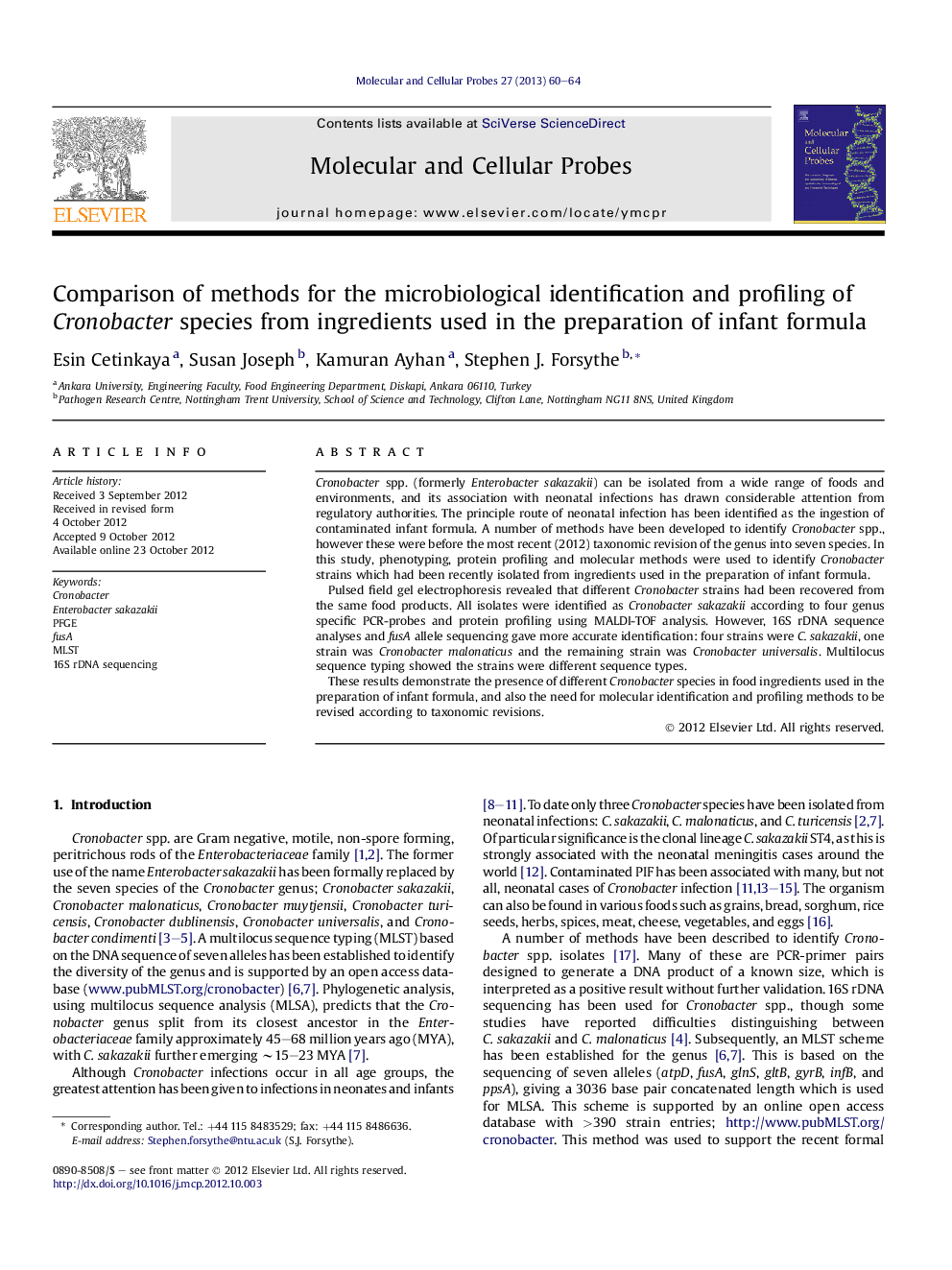| کد مقاله | کد نشریه | سال انتشار | مقاله انگلیسی | نسخه تمام متن |
|---|---|---|---|---|
| 2199774 | 1099617 | 2013 | 5 صفحه PDF | دانلود رایگان |

Cronobacter spp. (formerly Enterobacter sakazakii) can be isolated from a wide range of foods and environments, and its association with neonatal infections has drawn considerable attention from regulatory authorities. The principle route of neonatal infection has been identified as the ingestion of contaminated infant formula. A number of methods have been developed to identify Cronobacter spp., however these were before the most recent (2012) taxonomic revision of the genus into seven species. In this study, phenotyping, protein profiling and molecular methods were used to identify Cronobacter strains which had been recently isolated from ingredients used in the preparation of infant formula.Pulsed field gel electrophoresis revealed that different Cronobacter strains had been recovered from the same food products. All isolates were identified as Cronobacter sakazakii according to four genus specific PCR-probes and protein profiling using MALDI-TOF analysis. However, 16S rDNA sequence analyses and fusA allele sequencing gave more accurate identification: four strains were C. sakazakii, one strain was Cronobacter malonaticus and the remaining strain was Cronobacter universalis. Multilocus sequence typing showed the strains were different sequence types.These results demonstrate the presence of different Cronobacter species in food ingredients used in the preparation of infant formula, and also the need for molecular identification and profiling methods to be revised according to taxonomic revisions.
► Comparison of molecular and non-molecular methods for identification across the Cronobacter genus.
► Lack of discrimination by standardised methods due to out of date databases usage and incomplete databases (MALDI-TOF).
► Reliable and robust identification using fusA DNA sequencing, and support for multilocus sequence typing (MLST).
► Profiling of strains using MLST, and detection of profile (ST1) associated with neonatal meningitis.
► Demonstrates for the first time the presence of different Cronobacter strains and species within the same food sample.
Journal: Molecular and Cellular Probes - Volume 27, Issue 1, February 2013, Pages 60–64